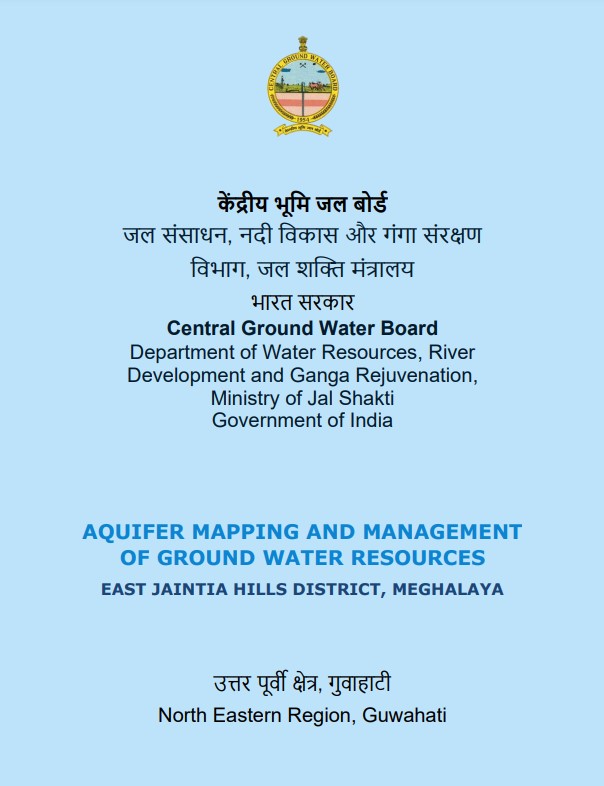AQUIFER MAPPING AND MANAGEMENT PLAN OF EAST JAINTIA HILLS DISTRICT, MEGHALAYA
| Category |
Aquifer Mapping |
| State |
Meghalaya
|
| District |
East Jaintia Hills |
| Block |
Saipung Wapung |
| Year of Issue |
2018 |
| Number of Authors |
1 |
| Name of Authors |
Shri Shasinlo Kent |
| Keywords |
AQUIM report, Aquifer Mapping, Aquifer geometry, Aquifer characteristics, Data Gap Analysis, ground water issues, ground water management plan, Panel Diagram, Irrigation, East Jaintia Hills District, Meghalaya |
| File |
Download |
Aquifer Mapping studies and Management Plan has been carried out in East Jaintia Hills district, Meghalaya under National Aquifer Mapping and Management Plan (NAQUIM) programme with an objective to know the different aquifer system prevailing in the study area, to decipher the vertical and lateral extend of the aquifer down to the depth of 200 m, its characteristic, quantity as well as quality so as to bring a complete sustainable and effective aquifer management plan for ground water resources development in the study area.These studies has been done through multi-disciplinary approach so as to achieve the said objectives. The total coverage area of aquifer mapping and management plan is 1001 sq.km out of 2040 sq.km of the district and is underlain by consolidated rocks ofSandstone and Limestone. Occurrence of ground water in the study area is mainly of weathered and fracturedSandstone and Limestone. The different hydrogeological datas are generated through intensive field data collection and testing.The aquifer system in this district can be dividedas a two aquifer systemviz., first aquifer (shallow) and second aquifer (deeper).Shallow or first aquifer consists of weathered residuum where ground water occurs under water table condition and is mainly developed by construction of dug wells or shallow bore wells as hand pump. The second aquifer is the deeper aquifer which tapped the fractured zone. Based on the study of litholog and analysis of depth of construction of dug wells and shallow bore wells, it was found that the first aquifer occur within 2 to 40 m bgl. Ground water in the second aquifer occurs under semi-confined to confined condition in the fractures zoneupto the maximum depth of 192.20 m bgl.
